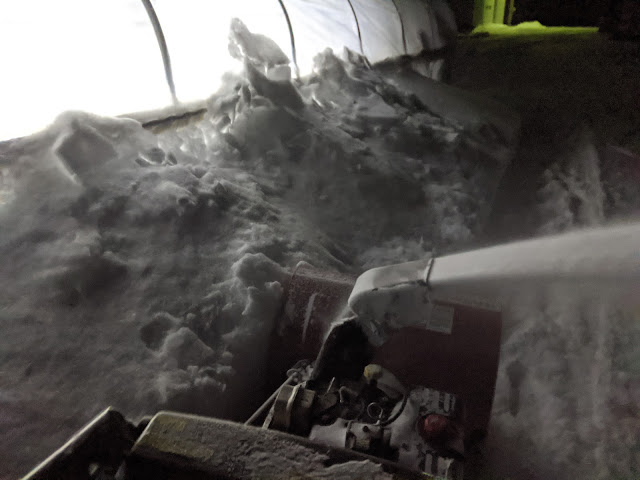I've been doing a few updates to the greenhouse. The house manufacturer sells wind/snow structural kits to make the frame stronger. These tie the vertical wall poles to the ground, keeping the poles from pulling out, while also preventing the "A" shape of the roof from spreading out. The previous owner of this greenhouse never had these but they were setup right next to another building. Our location is out in a field so I decided to add the extra reinforcements.
The main anchor component is a 36" earth-auger that has to be installed at each reinforcement. For my driver, I used an extra 35mm wheel-bearing socket (for a long-gone vehicle I owned years go) with a couple tabs welded to it. The auger eye almost fits into the socket, and the ears go along the sides of the eye to turn it. This worked pretty well and a 1/2" impact gun installed each auger in about 45 seconds.
Then it's just drilling a hole in the pole and assembling the turnbuckle hardware.
Since the value of the greenhouse contents can be quite significant (nearly the whole spring planting, for example), we added some electronic monitoring. This device monitors the temperature and humidity in the greenhouse. It also monitors if the power is on and has a built in battery for sending alarms when the power goes out.
It will call/text/email if parameters fall outside of the alarm ranges. The primary concerns are too cold in the winter/spring, and too hot (or too humid) in the summer.
The data-logging from the monitoring device really shows how well the greenhouse can capture the sun's energy. Yesterday, the high temperature outdoors was 28°F but the greenhouse got over 96°F in the afternoon because the sun was out for a little while. On a cloudy day it's not quite that good but it still runs at least 20°F higher than ambient.














